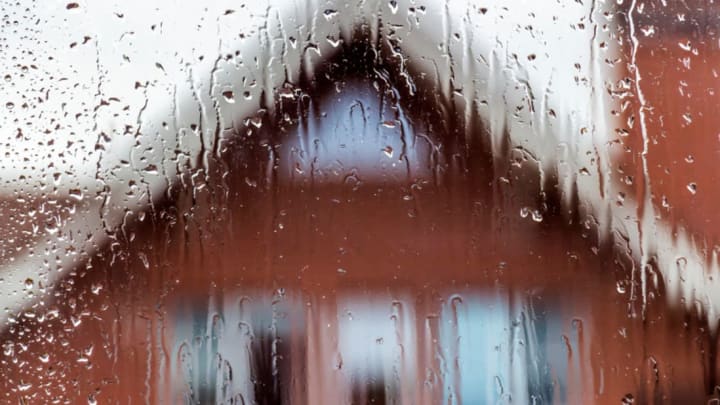Meteorologists get a bad rap. They’re right up there with doctors as the most visible scientists in society, but their work is routinely badmouthed and unappreciated by so many people who benefit from it every day. “They get paid for being wrong half the time!” is a common insult, and it couldn’t be farther from the truth. The vast majority of forecasts are very accurate these days—a three-day forecast today is as accurate as a one-day forecast was during the waning years of the Cold War—but some predictions can still go awry.
1. GETTING THE FORECAST WRONG IS CALLED A "BUST."
Some busts are bigger than others. If your local forecast called for a high of 85°F today and it only hit 79°F, that was a bust, but it’s not one many people are going to notice. If a forecast calls for flurries overnight and you wake up to find your car buried under a snow drift, that’s a huge bust.
The science of meteorology has advanced at breakneck speeds in recent years. Each new tool they create allows meteorologists to understand more about our atmosphere, and better anticipate its next moves. It wasn’t uncommon a few generations ago for people to go completely unwarned before a hurricane tore through town. Now we know if something is brewing days before the first cloud pops up.
2. THE MODELS CAN SCREW UP.
Hurricane Joaquin’s forecast track on September 30, 2015, compared to the actual track the hurricane took. Image credit: Dennis Mersereau
Some of the worst forecast busts come from weather models giving us bad information. These advanced computer algorithms use what we know about the weather right now to predict what the weather will do in the near future.
A perfect example of this is Hurricane Joaquin, a powerful storm that developed in the Atlantic Ocean in 2015. Warm water and the late September heat allowed Joaquin to pack 155 mph winds at its strongest, and many weather models showed the storm making landfall near Washington D.C. a few days later. Few models showed it moving out to sea, so meteorologists were concerned that a major storm was about to hit a huge metropolitan area.
All of the models that showed Joaquin hitting the United States were wrong. Joaquin raced out to sea and hit Bermuda instead. The weather models had a hard time figuring out a complicated weather pattern north of the hurricane that affected its future path—and since they didn’t figure it out, they didn’t get the track of the storm right.
This is usually the story for most major, news-making forecast busts; when a hurricane doesn’t hit or a blizzard doesn’t materialize, it’s usually because the models screwed up.
3. YES, HUMAN ERROR CAN PLAY A ROLE.
Weather models are called “guidance” for a reason. They can give you an idea of what’s going to happen, but it’s up to you to interpret the data and use knowledge and experience to figure out what’s right and what’s wrong. Since there’s a decent amount of instinct and judgment that goes into forecasting, it’s not unusual for a meteorologist to get one wrong. Maybe he or she misjudged the timing of a warm front, or mistakenly brushed off a pocket of cold air that allowed the rain to turn into ice. Humans are fallible, and as long as there’s some level of discretion involved in predicting the weather, there’s going to be occasional human error.
4. RANDOM CHANCE ALSO HAS AN IMPACT.
Sometimes what plays out in the sky escapes both weather models and the trained eye. A great example of this is “the cap,” which is an inversion layer (a layer of warm air above cooler air) that prevents air from rising through it. A capping inversion can stifle a day expected to see horrible thunderstorms: If the cap doesn’t erode, air won’t be able to rise, and thunderstorms won’t form. A day can have the perfect ingredients for severe weather, but sometimes nothing happens because the air just couldn’t rise.
5. WE ALL FEED THE MEDIA BEAST.
One way the internet has affected meteorology is how it makes us perceive the weather. The race for clicks and ratings causes some sources to exaggerate the effects of certain storms. The bigger and meaner a storm, the more play it gets. This can lead people to believe something worse is on its way than what’s forecast. If you read about a horrible tornado outbreak that was never forecast to be that bad, you might think the forecast was a bust if only a handful of tornadoes touched down. Not only do forecasters have to work through actual errors in the process, but the Facebookization of the weather means they have to play the expectations game as well.
